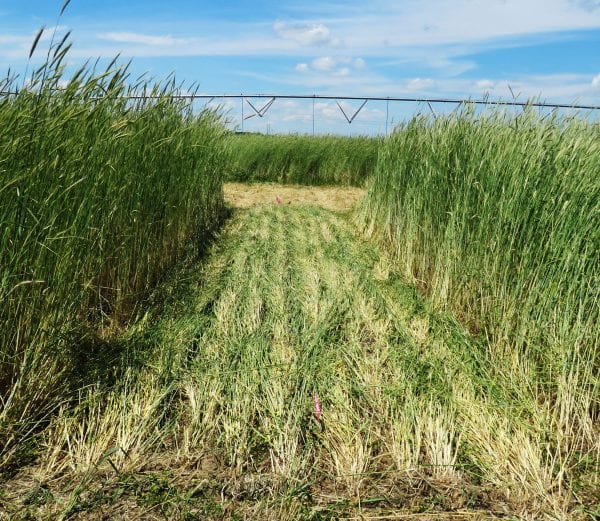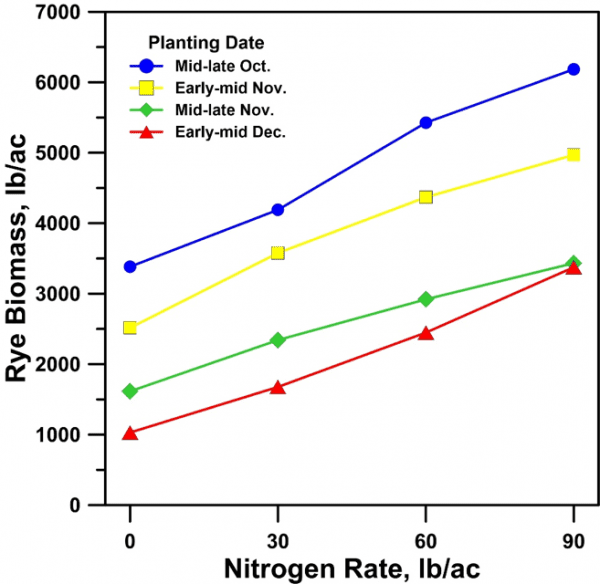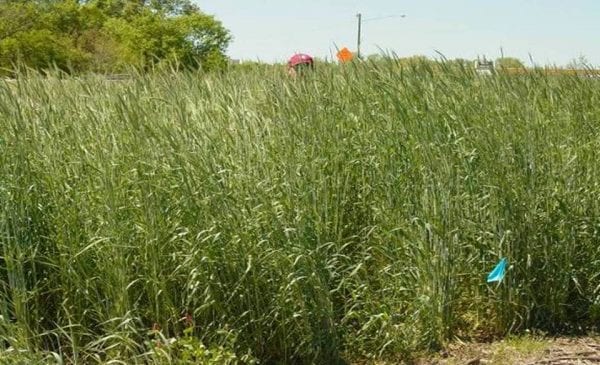Cover Crops

Cover crops are an investment much like any other input for agricultural operations. In order for producers to maximize their return on investment, cover crops should be managed to maximize benefits while minimizing costs.

Figure 1. Rye cover crop. (Photo credit: United States Department of Agriculture National Soil Dynamics Laboratory)
Many of the benefits associated with cover crops are enhanced by increasing cover crop biomass and amount of residue remaining on the soil surface following cover crop termination. For example, greater amounts of residue on the soil surface can help suppress weeds and improve soil moisture retention during the cash crop growing season.
When making management considerations for cover crop biomass production, there are few costs that producers can control. Optimizing seeding rates and fertilization can lower the overall cost per acre for biomass production.
In an ongoing study conducted at the Wiregrass Research and Extension Center in Headland, Alabama, the effect of planting date, seeding rate, and nitrogen (N) fertilization on cover crop biomass production and cost was assessed. Results showed that optimizing seeding rates and fertilization can lower the overall cost per acre for biomass production.
Seeding Rate Effect on Rye Biomass Production and Cost
Two cover crop seeding rates were evaluated in the study: 60 pounds per acre and 90 pounds per acre. The first 4 years of the study demonstrated there was never an effect of seeding rate on biomass production.
This preliminary data, as well as data from other studies out of the Southeast, indicate that 60 pounds per acre is adequate to maximize rye biomass when seed is drilled.
Planting Date and Nitrogen Rate Effect on Rye Biomass Production and Cost

Figure 2. Response of rye biomass to N rate according to planting date. Data is averaged for 60 and 90 pounds per acre seeding rates.
Four fall-applied N rates (0, 30, 60, and 90 pounds per acre) were evaluated across four planting dates:
- mid- to late October
- early to mid-November
- mid- to late November
- early to mid-December
The earliest planting date (mid- to late October) produced the highest biomass compared to all other planting dates across all N rates. This is not surprising, as earlier planting dates allow for longer periods of growth.
Cover crop biomass levels at early planting dates (mid- to late October) with no N fertilizer applied were comparable to biomass levels of later planted cereal rye (mid- to late November and early to mid-December) receiving 90 pounds per acre. These findings demonstrate that producers can save money that would otherwise be spent on N fertilizer by planting cover crops earlier in the growing season.
Results from this study also suggest that producers forced to plant later in the year need to consider supplemental N fertilizer the following spring to ensure adequate biomass production.
Cover Crop Production Recommendations

Figure 3. Rye cover crop. (Photo credit: United States Department of Agriculture National Soil Dynamics Laboratory)
- For producers drilling 90 pounds per acre or more of rye as a cover crop, consider reducing seeding rates to approximately 60 pounds per acre. This will help to reduce cost while maintaining biomass production.
- Planting early is critical for producing high cover crop biomass, which can maximize season-long cover crop benefits (for example, weed suppression and moisture retention) for the cash crop that follows.
- Supplemental N fertilizer may be required for producers unable to plant early to ensure they achieve adequate biomass levels.
- It is important to consider weather conditions when determining when to apply N fertilizer. In years with heavy rainfall, applied N can be lost through leaching deeper into the soil profile. To improve fertilizer use efficiency, it may be beneficial for producers to wait until spring to make N applications in years when heavy rainfall is expected throughout the fall and winter months (for example, in an El Niño year) or for late-planted cover crops.
- Timing of termination is also critical for maximizing biomass production. Spring months usually contribute to significant rye growth, with later termination dates typically producing much more biomass.
Kipling S. Balkcom, Affiliate Associate Professor, and Noah R. Hull, Research Associate, both in Crop, Soil, and Environmental Sciences, Auburn University; and Audrey V. Gamble, Extension Soil Scientist
Reviewed October 2021, Management Considerations Rye Cover Crop Production, ANR-2521

